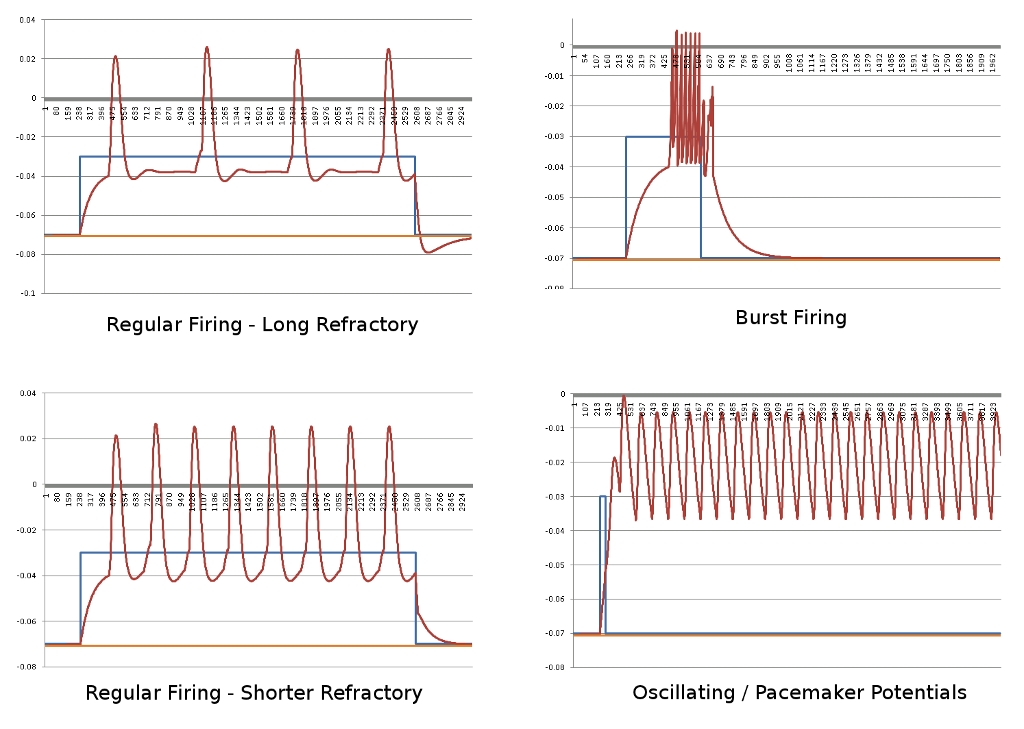Continuing on posting some past work to get the blog up to date, here are some graphs showing completion of the Hodgkin Huxley method of processing voltage gated ion channels. At this point, the neural network supports adding ion channels to the plasma membrane with different gating types, including voltage gates as well as voltage gates with inactivation gates (as well as ion pumps, though these are not processed by HH).
Akin to how protein subunit types give rise of the type of channel and gates of a physical ion channel, attributes associated with a SynthNet ion channel control what kind of channel and gates it possesses. Additional properties such as membrane threshold potential, permeability, and refractory period control the behavior of the voltage gated ion channels.
Below are some graphs with a two connected neural processes, the latter containing voltage gated sodium channels (with inactivation gates) and voltage gated potassium channels, constructed to behave as normal neural structures do during the action potential process. The first structure (membrane potential shown in blue) was clamped at -30mV for different periods of time in each graph. Shown is red is the membrane potential of the second structure. The left graphs show regular firing with different refractory periods, while the right graphs show burst and oscillating potentials (caused by the rate and magnitude of repolarization remaining higher than the threshold potential, coupled with a very short refractory period).

In the next post, I’ll be showing the interaction of action potential (via HH) and electrotonic potential (via cable and capacitance calculations) over a more complex morphology.
 Hello - and thanks for visiting my site! I maintain ToniWestbrook.com to share information and projects with others with a passion for applying computer science in creative ways. Let's make the world a better and more beautiful place through computing! | More about Toni »
Hello - and thanks for visiting my site! I maintain ToniWestbrook.com to share information and projects with others with a passion for applying computer science in creative ways. Let's make the world a better and more beautiful place through computing! | More about Toni » 




Leave a Reply